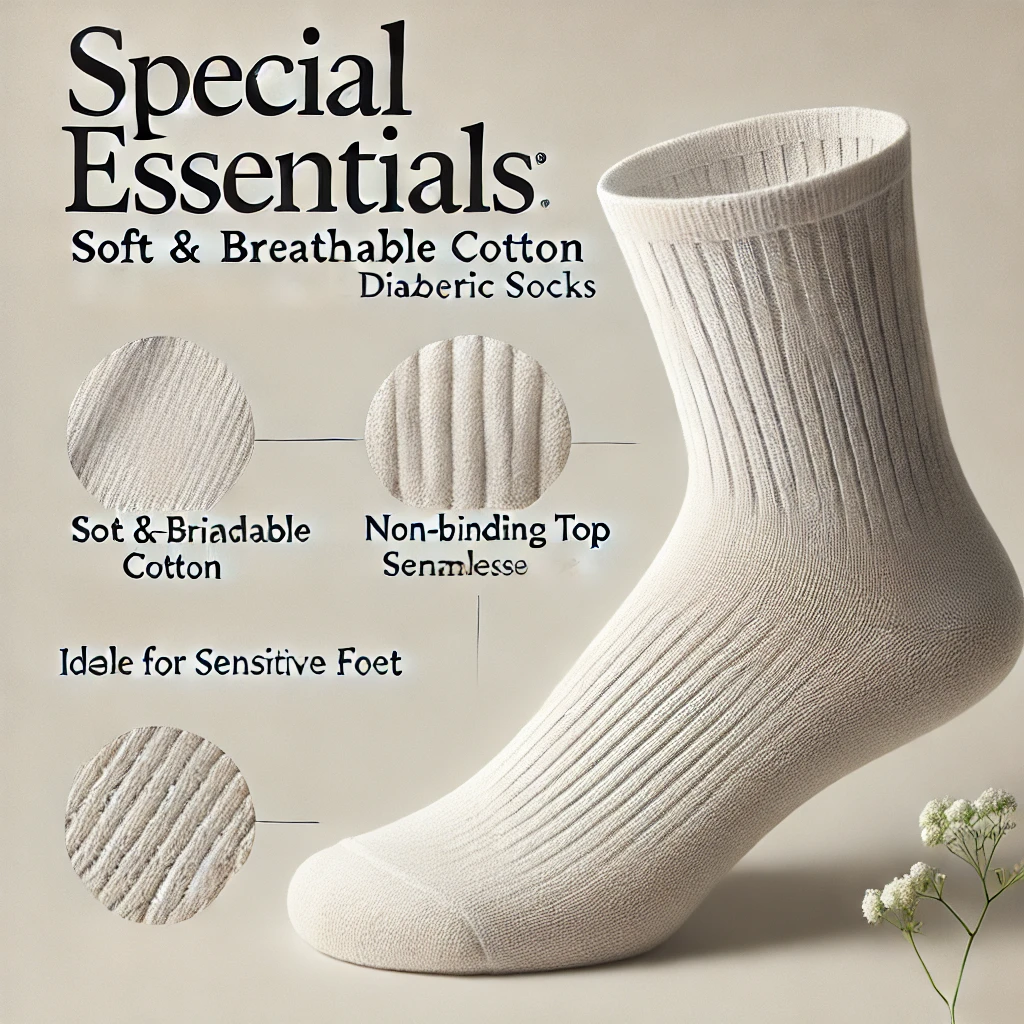Living with diabetes and dry feet is more common than one might think. Individuals diagnosed with diabetes often face a myriad of complications, one of which includes the condition of their feet. The intricate relationship between diabetes and foot health necessitates understanding the underlying mechanisms that lead to dry skin, the symptoms associated with it, preventive measures, treatment options, and when to seek professional help. Addressing these concerns head-on can significantly improve one’s quality of life.
Contents
Understanding Diabetes and Dry Feet: Causes, Effects, and Care
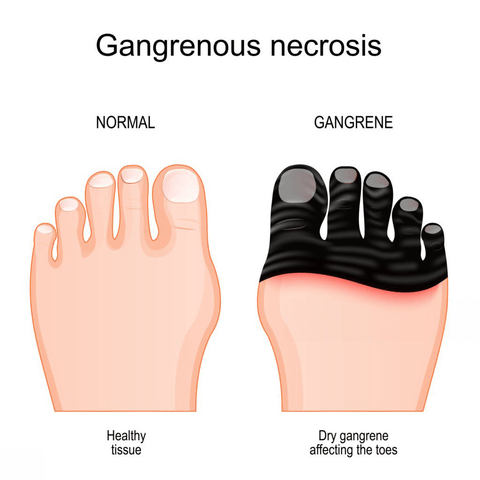
Diabetes is not just a single ailment but a collection of metabolic disorders characterized by high blood sugar levels over extended periods. This elevated blood sugar manifests in various physiological changes, including those affecting the skin, particularly on the feet.
The impact of diabetes on foot health cannot be overstated. Poor circulation, neuropathy, and dehydration are common issues associated with diabetes that contribute to dry, cracked feet. As the body struggles to manage glucose levels, the subsequent results—like decreased moisture levels in the skin—can lead to more severe problems if left unattended. It’s crucial for diabetics to recognize the signs and symptoms of dry feet and understand the intricacies of this condition.
The Link Between Diabetes and Dry Feet
For individuals with diabetes, maintaining proper foot health requires diligence and daily attention. The link between diabetes and dry feet is a complex interplay of biochemical changes within the body. Elevated glucose levels can hinder blood circulation and create nerve damage, leading to compromised skin health.
Furthermore, people with diabetes often experience dehydration due to the excessive urination associated with high blood sugar levels. This dehydration contributes to the development of dry skin, particularly on extremities such as the feet. The skin becomes less elastic and more susceptible to cracking, which can lead to infections and other complications.
Neuropathy and Its Impact on Foot Health
Neuropathy is a condition characterized by nerve damage, which is prevalent among diabetics. When nerves in the feet become impaired, individuals may lose sensation, making it difficult to detect injuries or irritations. As a result, they may neglect small cuts or blisters, leading to greater issues down the road. The loss of sensation coupled with dry skin creates a dangerous cycle—a diabetic may not feel a blister forming, which then worsens due to dryness and leads to potential infection.
Moreover, neuropathy can also affect the sweat glands in the feet. A reduced ability to sweat means less natural moisture is available to keep the skin hydrated. The lack of sweat can exacerbate the feeling of dryness, making it imperative for diabetics to adopt a proactive approach to foot care.
Reduced Circulation and Its Role in Dryness
Another prominent factor contributing to the link between diabetes and dry feet is poor circulation. High blood sugar can damage blood vessels, reducing blood flow to the extremities. Insufficient circulation means that essential nutrients and moisture are not delivered effectively to the skin on the feet.
When blood flow is compromised, the skin loses its ability to retain moisture, leading to dryness and increasing the risk of cracks and fissures. In essence, the body’s healing processes are slowed down, making any minor abrasions or injuries harder to heal. This emphasizes the importance of regular foot monitoring and treatment for those living with diabetes.
Symptoms of Dry Feet in Diabetics
Identifying the symptoms of dry feet is vital for effective management. Many diabetics may overlook early signs of dryness, leading to severe complications.
Common Signs to Look Out For
Dry feet can present a range of symptoms. Initially, individuals may notice rough patches or flaking skin, which can develop into deeper cracks if untreated. It may also become increasingly itchy or uncomfortable, signaling that the skin is not receiving adequate hydration.
As the condition progresses, individuals might observe redness around the cracks, which can indicate an impending infection. In some cases, the skin may harden or thicken, commonly referred to as calluses. Identifying these signs early on is crucial for implementing appropriate treatment and care strategies.
Psychological Impact of Foot Health
While physical symptoms are important to recognize, the psychological impact of living with diabetes and dry feet should not be underestimated. Many individuals feel self-conscious about the appearance of their feet, which can lead to avoidance of social situations or even negatively impact mental well-being.
Understanding the emotional aspects of foot health is vital for comprehensive care. Support groups or counseling can provide a safe space for sharing experiences, which in turn can foster better management strategies and overall confidence.
Preventive Measures for Healthy Feet
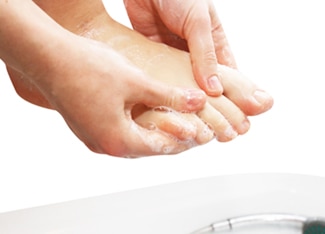
Prevention is always better than cure, especially when it comes to managing diabetes and ensuring healthy feet. Developing a daily foot care routine is essential for minimizing the risk of dry feet and its associated complications.
Daily Foot Care Routine
Establishing a meticulous foot care routine can make a world of difference for someone with diabetes.
Cleaning and Inspection
Start with washing your feet daily using mild soap and warm water. Make sure to thoroughly dry them, paying special attention to the areas between the toes where moisture can accumulate. Regular inspection is equally important; look out for any cuts, blisters, or signs of redness that could signal a problem.
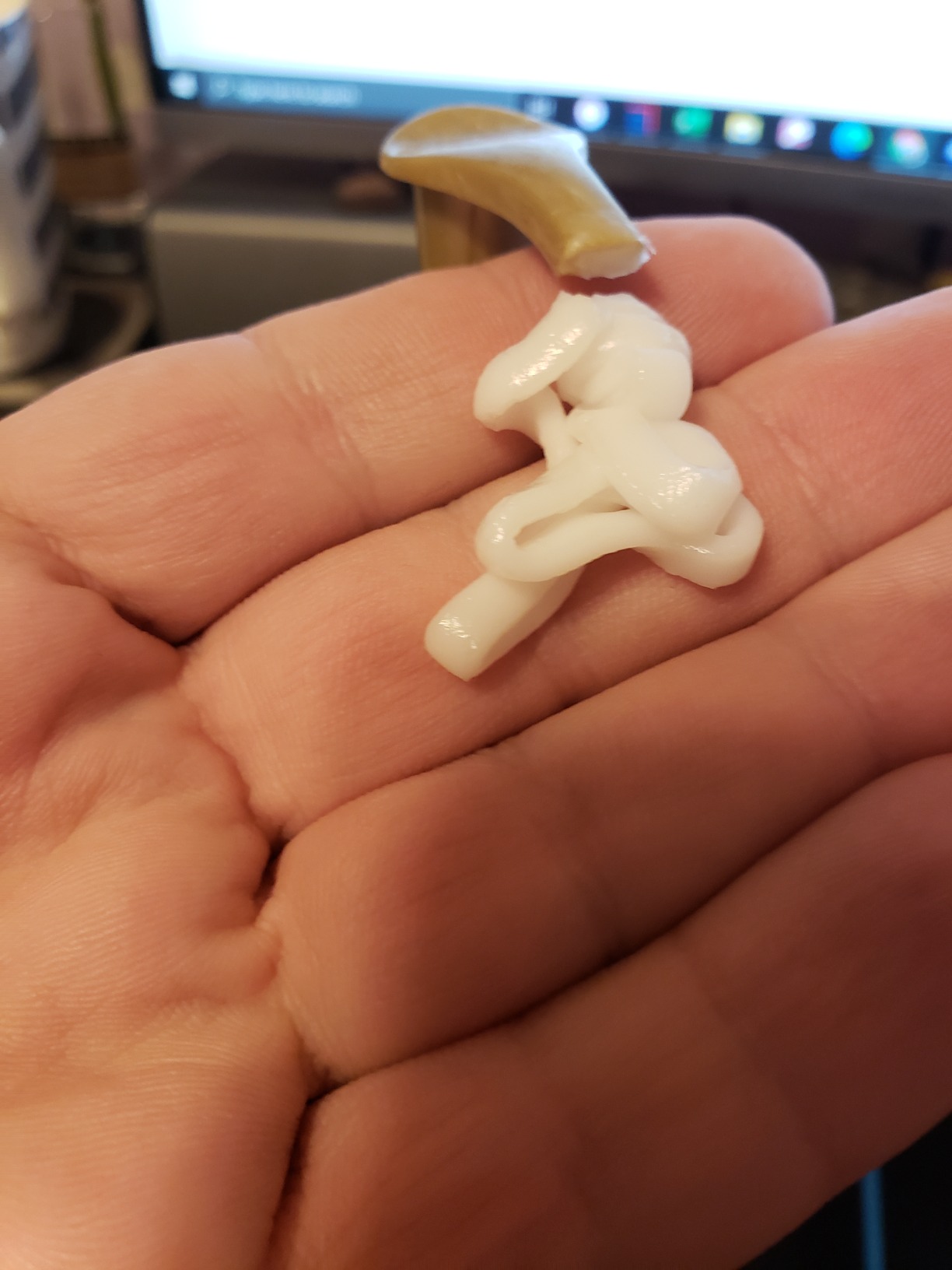
Incorporating this practice into your daily routine can act as both prevention and early detection. By being vigilant about foot health, you can address minor issues before they escalate into major complications.
Moisturizing Techniques
Moisturizing your feet is crucial in combating dryness. Use a quality moisturizer specifically designed for diabetic skin care, applying it liberally to your feet while avoiding the spaces between your toes. This ensures that the skin remains hydrated without creating a breeding ground for fungi.
Consider applying moisturizer after your daily wash, ensuring your feet remain quenched throughout the day. Additionally, wearing socks post-application can help seal in moisture and promote hydration overnight.
Choosing the Right Footwear
Footwear plays a significant role in maintaining foot health, especially for individuals with diabetes.
Importance of Proper Fit
Choosing shoes that fit well is paramount. Ill-fitting shoes can cause friction, leading to blisters and sores, further exacerbating dry skin conditions. Opt for shoes that provide ample room for the toes while still offering support. Look for features like cushioned insoles and breathable materials to ensure comfort throughout the day.
Don’t forget about socks! Selecting moisture-wicking socks made from cotton or synthetic fibers can aid in keeping your feet dry and prevent unnecessary moisture buildup, reducing the likelihood of developing dry feet.
Periodic Replacement
It’s easy to overlook footwear, but periodically replacing old shoes and socks can greatly influence foot health. Worn-out shoes may no longer provide the necessary support, leading to additional stress on the feet. Set a schedule to evaluate the wear and tear of your footwear regularly, ensuring you’re never caught in ill-fitting shoes.
Gold Bond Diabetics’ Dry Skin Relief Body Lotion
Treatment Options for Dry Feet

If dry feet become a persistent issue, exploring treatment options is essential for restoring skin health and preventing further complications.
Home Remedies and Moisturizers
Home remedies can offer effective solutions for treating dry feet, especially for those keen on natural methods.
Natural Oils and Butters
Using natural oils such as coconut, olive, or almond oil can provide deep hydration. These oils penetrate the skin’s layers, locking in moisture and promoting healing. Applying these oils just before bed can enhance their benefits overnight, allowing for maximum absorption.
Additionally, shea butter is known for its moisturizing properties. Massaging shea butter onto your feet, especially on cracked areas, can significantly improve skin texture and restore softness.
Exfoliation Techniques
Regular exfoliation is an excellent way to remove dead skin cells and promote healthier skin. Utilizing a pumice stone or foot scrub can help smooth rough patches and prevent further cracking. However, moderation is key—excessive exfoliation can lead to irritation and worsen the condition of already fragile skin.
When to Seek Professional Help
Knowing when to reach out to healthcare professionals is critical for diabetics struggling with dry feet.
Recognizing Severe Symptoms
If there are signs of infection—such as increased redness, swelling, discharge, or fever—it is critical to consult a doctor immediately. Delaying treatment for infected wounds can lead to severe complications, including hospitalization.
Additionally, if home treatments are not yielding results, seeking medical advice can provide alternative options, such as prescription creams or medications tailored to specific needs. Always prioritize your foot health; it’s an investment in your overall well-being.
Notes
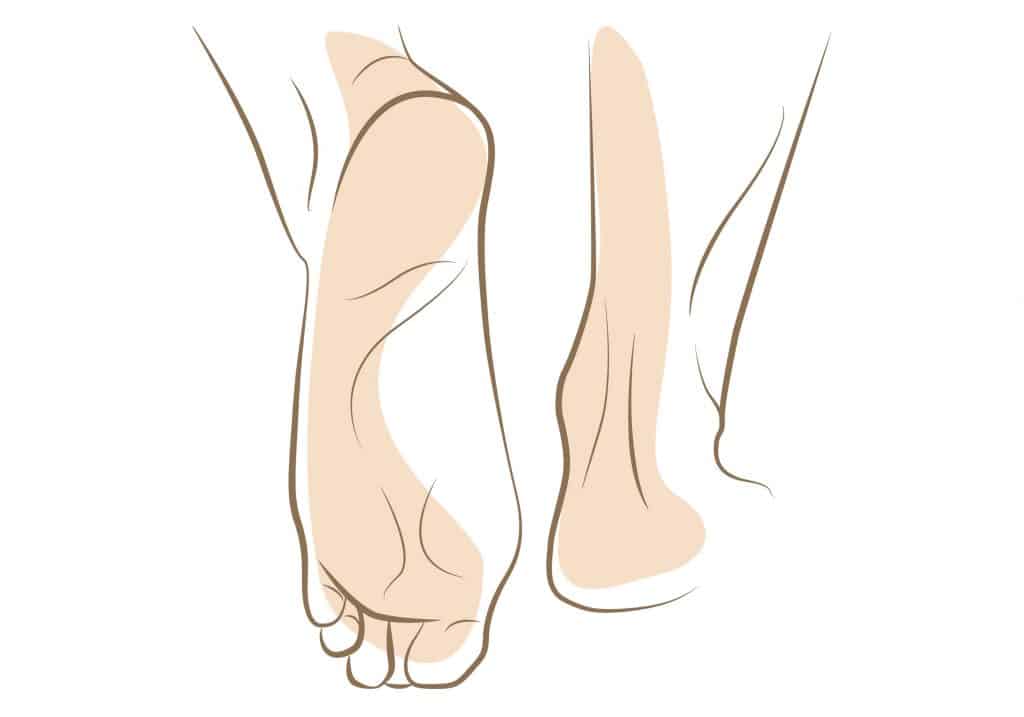
Recognizing the implications of diabetes and dry feet extends beyond basic foot care practices. It integrates a holistic understanding of personal habits, lifestyle choices, and emotional health. Each aspect plays a vital role in how one manages this condition, emphasizing the need for comprehensive approaches to treatment and prevention.
Stay informed about emerging research and trends within diabetes care. Participating in community initiatives or workshops can provide valuable insights and foster a supportive environment for those navigating similar challenges.
Mistakes to Avoid
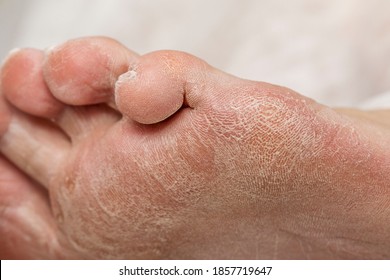
While there are many things you can do to care for your feet, avoiding common pitfalls is equally crucial for success.
Ignoring Early Warning Signs
One of the biggest mistakes diabetics can make is ignoring early warning signs of foot issues. Small changes can escalate quickly if left unaddressed, leading to severe consequences.
Cultivating awareness of your foot health is essential. Make it a habit to check for changes daily, and don’t hesitate to consult professionals if you notice anything unusual. Your feet deserve attention and care, just like every other part of your body.
Overusing Moisturizers
While moisturizers play a significant role in foot care, overusing them can lead to adverse effects. Applying too much can create a slippery surface, increasing the risk of slips and falls.
Furthermore, excessive moisture can lead to fungal infections, particularly in the spaces between toes. Striking a balance is key—ensure you’re applying enough to hydrate the skin without overwhelming it.
Frequently Asked Questions

Understanding diabetes and dry feet encompasses a lot of information, leaving many with questions about managing their condition effectively. Here are some frequently asked questions:
Can dry feet lead to serious complications in diabetics?
Yes, dry feet can lead to serious complications in diabetics. When the skin is dry and cracked, it can create openings for bacteria and fungi to enter, leading to infections. Furthermore, poor circulation and neuropathy associated with diabetes can delay healing, increasing the risk of severe outcomes, including amputations in extreme cases. Therefore, it’s essential to maintain foot health through diligent care.
What are some effective home remedies for dry feet?
Several effective home remedies can help combat dry feet. Some popular options include:
- Soaking: Soak your feet in warm water mixed with Epsom salts to soothe dryness.
- Natural Oils: Applying coconut or olive oil can provide deep hydration.
- Exfoliating: Using a pumice stone to gently exfoliate can help remove dead skin and promote smoother skin.
Incorporating these remedies into your routine can aid in keeping your feet healthy and hydrated.
Conclusion
Living with diabetes and dry feet presents unique challenges that require attention and care. By understanding the connection between diabetes and foot health, recognizing symptoms, and adopting proactive measures, individuals can take control of their circumstances and ensure their feet remain healthy.
Ultimately, striking a balance between prevention, treatment, and self-care can empower diabetics to live fulfilling lives, free from the constraints of foot complications. Remember, your feet are your foundation—prioritize their health today for a stronger tomorrow.


